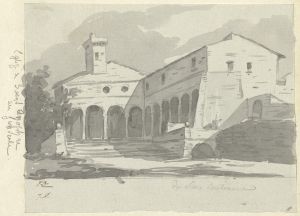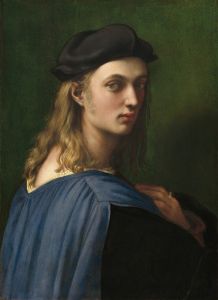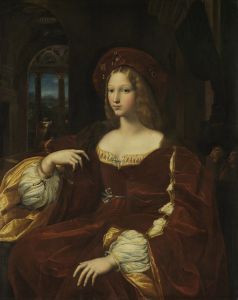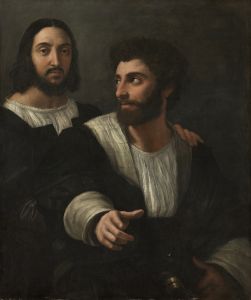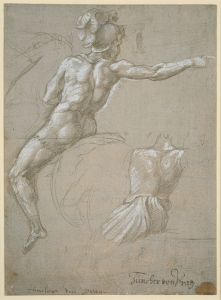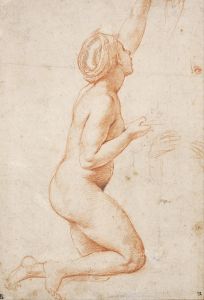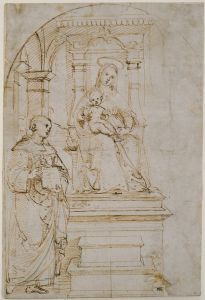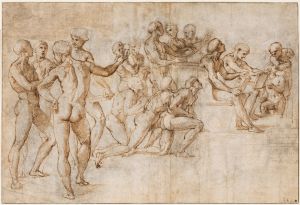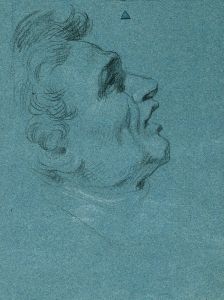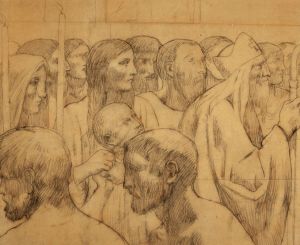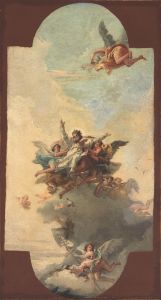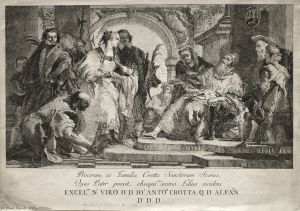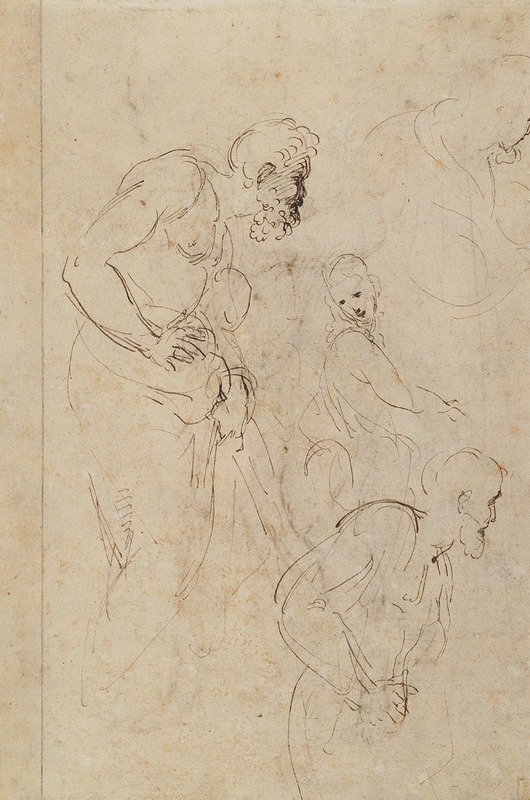
Studies for the Disputa
A hand-painted replica of Raphael’s masterpiece Studies for the Disputa, meticulously crafted by professional artists to capture the true essence of the original. Each piece is created with museum-quality canvas and rare mineral pigments, carefully painted by experienced artists with delicate brushstrokes and rich, layered colors to perfectly recreate the texture of the original artwork. Unlike machine-printed reproductions, this hand-painted version brings the painting to life, infused with the artist’s emotions and skill in every stroke. Whether for personal collection or home decoration, it instantly elevates the artistic atmosphere of any space.
Raphael, one of the most renowned artists of the Italian Renaissance, created numerous preparatory studies for his masterpieces. Among these, the "Studies for the Disputa" holds a significant place as it provides insight into his creative process for the fresco "The Disputation of the Holy Sacrament" (La Disputa), which is part of the Stanza della Segnatura in the Vatican. This fresco, completed between 1509 and 1510, is celebrated for its intricate composition and profound theological themes.
The "Studies for the Disputa" are a series of drawings that Raphael executed as he developed the complex arrangement of figures and ideas for the final fresco. These studies are crucial for understanding how Raphael planned and refined his work, demonstrating his meticulous approach to composition, anatomy, and perspective. The drawings reveal Raphael's ability to convey a narrative through a harmonious arrangement of figures, each contributing to the overall theological discourse depicted in the fresco.
In these studies, Raphael explored various poses, gestures, and interactions among the figures, which include theologians, philosophers, and saints engaged in a celestial debate about the Eucharist. The studies show his experimentation with different groupings and the spatial relationships between the figures, which would later be translated into the dynamic and balanced composition of the fresco. Raphael's attention to detail in these preparatory works underscores his commitment to achieving both aesthetic beauty and intellectual depth in his art.
The "Studies for the Disputa" also highlight Raphael's skill in drawing and his ability to capture the human form with precision and grace. His use of line and shading in these studies demonstrates his mastery of draftsmanship, which laid the foundation for the vibrant and lifelike figures in the final fresco. These preparatory drawings are typically executed in pen and ink, chalk, or charcoal, mediums that allowed Raphael to quickly sketch and modify his ideas.
Raphael's studies are not only valuable for art historians and scholars but also for artists and students who seek to understand the techniques and processes of one of the greatest masters of the Renaissance. They offer a glimpse into the artist's workshop and the collaborative environment in which he worked, often involving assistants and apprentices who contributed to the execution of his grand projects.
Today, many of Raphael's studies, including those for the Disputa, are housed in major art collections and museums around the world, such as the Ashmolean Museum in Oxford and the Uffizi Gallery in Florence. These institutions preserve and display the drawings, allowing the public to appreciate the preliminary stages of Raphael's artistic genius.
In summary, the "Studies for the Disputa" are an essential component of Raphael's oeuvre, providing valuable insights into his creative process and the development of one of his most celebrated works. Through these studies, we gain a deeper appreciation for Raphael's artistic vision and his enduring influence on the art world.





